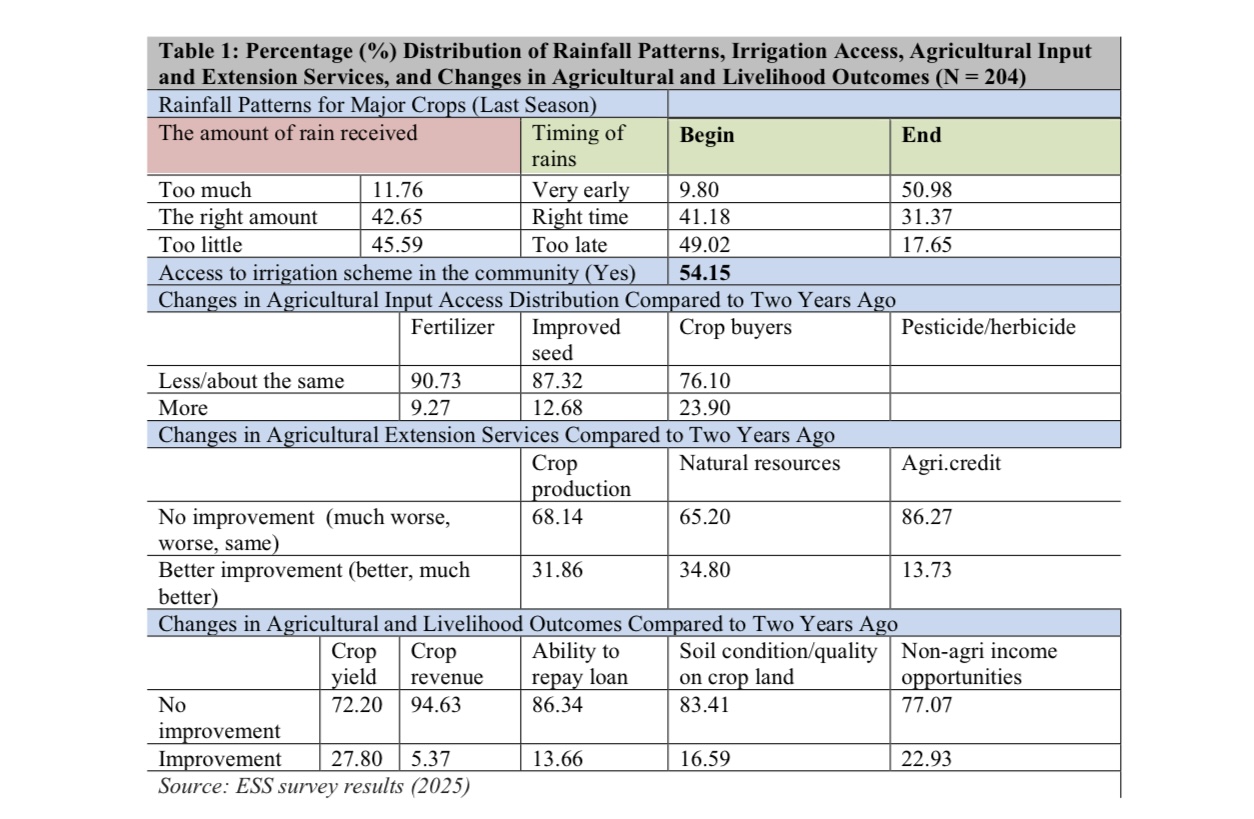

Building Climate-Resilient Farming Communities: Linking Access to Agricultural Inputs and Services with Crop Yield and Revenue under Rainfall Variability in Ethiopia
1. Introduction
Ethiopia’s smallholder agriculture faces growing threats from climate variability, especially fluctuations in rainfall. More than 80% of Ethiopian smallholder farmers depend on rain-fed systems, which makes their livelihoods and food security highly sensitive to changes in precipitation patterns (World Bank, 2024). Erratic rains and prolonged dry spells reduce crop productivity and push households toward food insecurity. At the same time, limited and uneven access to key agricultural inputs such as improved seeds, fertilizers, drought-tolerant varieties and extension services constrains farmers’ capacity to adapt and maintain production (Dabesa et al.,2022). These deficits amplify the negative impacts of rainfall variability and contribute to lower yields, reduced revenues and rising vulnerability across farming communities.
Observed evidence at the national and local levels illustrates the problem. The Ethiopia Socioeconomic Survey recorded yield reductions for staples such as maize and sorghum in communities with irregular rainfall patterns (ESS, 2022). Field studies point to large seasonal fluctuations in crop performance; for example, a panel study in Hulbarag District (Silte Zone) reports extraordinary rainfall variability in crops commonly regarded as stable: 42.7% variability in spring and 32.6% in summer, both of which significantly disrupt yields and, when combined with rising temperatures, further depress maize output (Kerebo et al., 2025). Farmers across regions cultivating maize, wheat, barley and sorghum report late starts, early ends and unpredictable rainfall quantities that undermine planting and harvesting schedules (Aniye et al.,2025; Abebe et al., 2025; Sinore and Wang, 2024). Pastoralists and agro-pastoralists experienced acute water insecurity during the La Niña–triggered drought of 2022, driving severe food shortages and increased humanitarian demand in Somali, Oromia, SNNP and South-West regions (OCHA, 2022).
At the household level, the combined effect of climate variability and restricted access to inputs, irrigation and advisory services reduces the ability to produce and store crops, limits market participation and erodes soil fertility and incomes (Berhane et al., 2018; Asfaw and Mekonen, 2024; Manaye, 2024). Communities with weaker access to credit and market infrastructure face greater difficulty recovering from successive shocks and are more likely to depend on external assistance (FEWS NET, 2025). These dynamics point to an urgent need for robust, evidence-based analysis of how changes in access to agricultural inputs, extension services, markets and credit interact with rainfall variability to shape crop yield, farm revenue and household adaptive capacity.
This study asks two linked questions. First, how has community-level access to agricultural inputs, extension services, market access and credit changed over the last two years in Ethiopia?
Second, how are changes in access to these resources associated with crop yield, farm revenue and household adaptive capacity under rainfall variability during the same period?
2. Methodology
This study uses a quantitative, community-level approach to assess associations between access to agricultural resources and agricultural outcomes under rainfall variability. The analysis draws on secondary data from the Ethiopia Socioeconomic Survey for 2021/22 provided by theWorld Bank Microdata Catalog. The ESS contains nationally representative information on farming practices, crop types, rainfall patterns, use of inputs, extension contact, market access and household financial behavior, enabling a comparative assessment across communities and agroecological zones. The unit of analysis is the community. Key explanatory measures capture access to fertilizers, improved seed, pesticides, irrigation schemes, extension services, market proximity and availability of agricultural credit. Outcomes of interest are crop yield, farm revenue and an index of household adaptive capacity. Adaptive capacity is operationalized through observable indicators such as reported ability to cope with rainfall shocks, uptake of irrigation and technologies and patterns of loan repayment. The study focuses on short-term changes by comparing values and responses in the most recent two-year window available in the dataset. Analytical procedures begin with descriptive statistics to summarize patterns and disparities in access to inputs, extension contact, market and credit over the two-year period and to describe how rainfall variability co-occurs with those patterns. Following description, multivariate regression models test associations between measures of access and agricultural outcomes while controlling for confounding community characteristics such as baseline agroecology, farm size distribution and historical yield levels. Interaction terms are included to examine whether the effect of access to inputs or services on yields and revenues differs under conditions of high rainfall variability.
Robustness checks include alternative specifications of the adaptive capacity index, disaggregation by major staple crops and sensitivity analyses that account for potential reporting differences across survey enumerators and seasons. Where possible, models exploit temporal contrasts in the ESS panel structure to adjust for unobserved, time-invariant community factors. Using nationally representative ESS data allows this study to provide an evidence-based assessment of how changes in access to agricultural inputs, services and financial mechanisms shape smallholder outcomes in the context of rainfall variability. The findings are intended to inform policy and programming by identifying where input distribution, extension investment, market development and targeted financial instruments can most effectively strengthen agricultural productivity and resilience.
3. Results and Discussion
3.1. Descriptive Statistics
The results highlight that Ethiopian smallholder farmers faced substantial rainfall variability in the last season, with 45.6% reporting too little rainfall and nearly half (49.0%) noting late rain onset, while only 54.2% of communities had access to irrigation schemes, highlighting persistent vulnerability to climatic shocks. Over the past two years, access to key agricultural inputs has largely stagnated, with the majority of farmers reporting no increase in fertilizer (90.7%), improved seeds (87.3%), or crop buyers (76.1%), although slightly higher improvements were observed for crop buyers (23.9%). Similarly, agricultural extension services showed limited enhancement, with only 31.9% of farmers perceiving better advice on crop production, 34.8% on natural resources, and just 13.7% on agricultural credit. Reflecting these constraints, most farmers reported no improvement in critical agricultural and livelihood outcomes, including crop yield (72.2%), crop revenue (94.6%), loan repayment ability (86.3%), soil quality (83.4%), and non-agricultural income opportunities (77.1%), indicating that limited input access, weak extension services, and rainfall variability continue to constrain productivity, revenue, and adaptive capacity, consistent with literature emphasizing the compounded effects of climate variability and resource access on smallholder resilience.

3.2. Inferential Statistics
The logistic regression results suggest that access to agricultural inputs, extension services, and market linkages are key determinants of community-based agricultural and livelihood improvements under rainfall variability. Specifically, fertilizer access strongly increases the likelihood of improvements in crop yield (β = 2.195, p < 0.01), farmers’ ability to repay loans (β = 1.501, p<0.05), and cropland condition (β = 1.445, p<0.1), emphasizing the central role of nutrient inputs in enhancing productivity and adaptive capacity. Improved seed access is negatively associated with crop yield (β = -2.003, p<0.05), suggesting possible issues with seed suitability, adoption, or agroecological compatibility. Access to crop buyers positively affects crop yield (β = 1.104, p<0.05), crop revenue (β = 0.973, p<0.05), and non-farm income opportunities (β = 1.084, p<0.05), highlighting the importance of market connectivity for both agricultural and off-farm livelihoods. Extension services significantly contribute to outcomes, with crop production advice (β = 1.122, p<0.05) and agricultural credit advice (β = 1.754, p<0.01) improving crop yield and loan repayment capacity, while natural resource advice strongly enhances soil condition (β = 2.324, p<0.01). Rainfall variability and irrigation access, including their interaction, do not show significant effects across outcomes, indicating that the current level of irrigation may not fully buffer rainfall shocks or that other resource constraints dominate. Overall, these findings align with theory and empirical studies emphasizing that smallholder resilience is driven by integrated access to inputs, extension, and markets rather than rainfall conditions alone, providing policy-relevant evidence for targeting support to improve productivity, credit capacity, and livelihood diversification in Ethiopian communities.

4. Implications of the Study
The study highlights that Ethiopian smallholder farmers’ resilience and agricultural productivity are primarily constrained by limited access to inputs, extension services, and market linkages rather than rainfall variability alone. The distribution table shows that most farmers experienced suboptimal rainfall, yet only about half had irrigation access, and the majority reported no improvement in access to fertilizers, improved seeds, crop buyers, or extension services over the last two years. The logistic regression confirms that fertilizer access, crop buyers, and targeted extension services significantly enhance crop yield, loan repayment capacity, soil quality, and livelihood diversification, while rainfall shocks and current irrigation coverage exert limited effects. These findings imply that policies and programs aiming to strengthen climate-resilient farming should prioritize improving timely input distribution, expanding extension services, facilitating market connections, and scaling up effective irrigation schemes, as integrated support is more critical for enhancing productivity and adaptive capacity than rainfall management alone.
Authors: Fasika Chekol Mekonnen*, Naziha Gombilla Amin, Mutsangya Claire Doris, Nora Kimathi, Luckman Aborah Yeboah
References
1. Abebe, M. G., & Amare, Z. Y. (2025). Climate change and food security nexus in Ethiopia: challenges to food sustainability—a systematic literature review. Frontiers in Sustainable Food Systems, 9, 1563379.
2. Aniye, H. W. Y., Bekele, T., & Worku, W. (2024). Perception of smallholder farmers about climate change and its impacts on crop production across agroecological zones of the Gassera District, Southeastern Ethiopia. Scientific Reports, 14(1), 27632.
3. Abebaw, S. E. (2025). A Global Review of the Impacts of Climate Change and Variability on Agricultural Productivity and Farmers' Adaptation Strategies. Food Science & Nutrition, 13(5), e70260.
4. Dabesa, B., Mansingh, J. P., Haile, F., Nisha, A., & Lagese, W. (2022). Challenges and opportunities in the adoption of climate smart agriculture practices by smallholder farmers in Ethiopia. Agricultural Science Digest-A Research Journal, 42(6), 703-709.
5. Ethiopia Socio-Economic Panel Survey (ESS-2022). (2022). Panel Data on Rural Households. World Bank Microdata Catalog. Retrieved from https://microdata.worldbank.org/index.php/catalog/6161
6. Kerebo, K. A., Bizuneh, Y. K., Mekonen, A. G., & Mohammed, Y. (2025). Quantifying climate variability impacts on maize and wheat yield dynamics in Hulbarag district, Silte zone, Ethiopia: a panel data modelling approach. Discover Applied Sciences, 7(8), 917.
7. Manaye, A. (2024). Smallholder farmers' vulnerability to climate change in Tigray, Ethiopia. Sustainable Environment, 10(1), 2345452.
8. OCHA (2022). Ethiopia: Drought Update No. 4, June 2022
9. Berhane, G., Ragasa, C., Abate, G. T., & Assefa, T. W. (2018). The state of agricultural extension services in Ethiopia and their contribution to agricultural productivity. Intl Food Policy Res Inst.
10. Sinore, T., & Wang, F. (2024). Impact of climate change on agriculture and adaptation strategies in Ethiopia: A meta-analysis. Heliyon, 10(4).
11. World Bank. (2024). Ethiopia – Country Climate and Development Report. Washington, D.C. World Bank Group.
12. Asfaw Eshetu, A., & Mekonen, A. A. (2024). Determinants of small-scale irrigation adoption in drought-prone areas of northcentral Ethiopia in the context of climate change. Frontiers in Climate, 6, 1410527
13. FEWS NET. (2025).Weather shocks and tensions in the north sustain high food assistance needs.
https://fews.net/east-africa/ethiopia
Comments
No comments available.